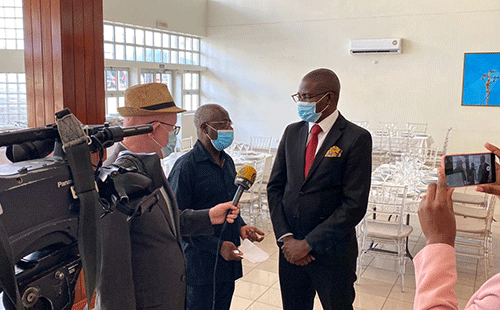The Angola-Namibia Permanent Joint Technical Commission on the Cunene River Basin says implementing the Baynes hydro project will diversify Namibia’s portfolio of energy sources for ensuring the security of electrical energy supply.
The 600MW Baynes hydro project is being developed by the Angolan and Namibian governments on a 50-50 basis and implemented through the Angola-Namibia Permanent Joint Technical Commission (PJTC) on the Cunene River Basin with grant funding support from the African Development Bank, Africa Legal Support Facility and the Swedish Fund.
“The Angolan and Namibian governments remain committed to the development of the bi-national project as this is a strategic project not only for the two countries but for the rest of the SADC region,’’ said the commission’s secretary Muyenga Muyenga.
“Namibia still largely relies on imports of electricity from South Africa and Zambia, but implementing the Baynes hydro project will diversify Namibia’s portfolio of energy,” he noted during a stakeholder engagement in Luanda on Wednesday.
Angola’s secretary for energy Antonio Belsa da Costa emphasised the importance of the Baynes project, as it is opening up the transmission interconnection between Angola and the SADC region through Namibia.
He said Angola would now be able to export its abundant hydro energy not only to Namibia but to the rest of the SADC region. He further stated that the Angolan government has prioritised this project and it is putting all intervention measures in place to expedite the implementation of the project.
The National Roads Institute of Angola (INEA) has confirmed that they have started with the procurement of consultants for the construction and upgrading of the 269km road from Tombwa to the Baynes project site at the border with Namibia, near Epupa.
The road will also benefit the port-to-port corridor project (Walvis Bay – Namibe Port in Angola).
This was confirmed by Henrique Victorino, the director general of INEA, at a meeting with Namibia’s Roads Authority (RA) and the Baynes project team in Luanda on Wednesday.
The feasibility studies for the Baynes project started in 2008 and were initially completed in 2014, but the two governments couldn’t raise the required US$1.3 billion at the time to commence with the construction of the dam due to the economic downturn in both countries.
Victorino indicated the project has accelerated the realisation of the port-to-port road corridor which will connect the port of Walvis Bay to the port of Namibe in Angola.
“This will be a strategic road network which would provide a more optimal route connecting Walvis Bay to Luanda. The construction of the remaining portion of the port-to-port corridor, from Opuwo - Tombwa through the Baynes site is expected to commence during the middle of 2023,’’ he said.
On the other hand, the RA said on the Namibian side, they are at an advanced stage to complete the feasibility study of extending the 175km road network from Opuwo to connect the Baynes Hydro Project, which will also complete the port-to-port corridor on the Namibian side.
The feasibility studies will be completed by September 2022, and construction to commence in 2023 once funding has been secured for the project.
“This is a very important road project for RA as it will also address the current road condition of the Opuwo-Okangwati-Epupa road, which has claimed many lives over the past few years,’’ said the RA spokesperson Hileni Fillemon.
The Baynes project will be marketed next week at the Hydro Conference 2022 taking place in France.
- jmuyamba@nepc.com.na


